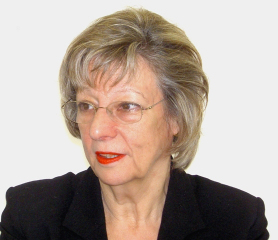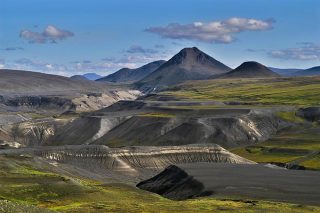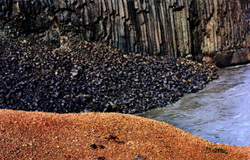'Barclays'
Tag Archive
Aug 17 2007
1 Comment
Actions, ALCOA, Australia, Barclays, Corruption, Cultural, Ecology, Economics, India, Jamaica, Norsk Hydro, Pollution, Repression, Samarendra Das, Surinam
By Felix Padel and Samarendra Das, Economic and Political Weekly, December 2005
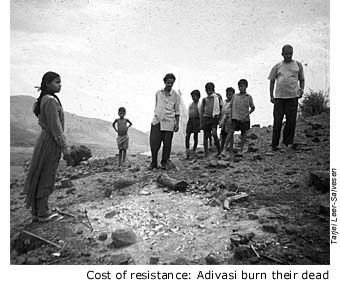
“The evidence we present goes against the conventional history of aluminium, which tends to portray the industry as central to various countries’ economic power and prosperity, without understanding the financial manipulation and exploitation between and within countries, and the true costs.”
Few people understand aluminium’s true form or see its industry as a whole. Hidden from general awareness are its close link with big dams, complex forms of exploitation in the industry’s financial structure, and a destructive impact on indigenous society that amounts to a form of genocide. At the other end of the production line, aluminium’s highest-price forms consist of complex alloys essential to various ‘aerospace’/’defence’ applications.1 The metal’s high ‘strategic importance’ is due to its status as a key material supplying the arms industry. In these four dimensions ‘ environmental, economic, social and military ‘ it has some very destructive effects on human life.
Read More
Jul 09 2007
9 Comments
Actions, ALCOA, Barclays, Bechtel, Century Aluminum, Denmark, Impregilo, India, Saving Iceland
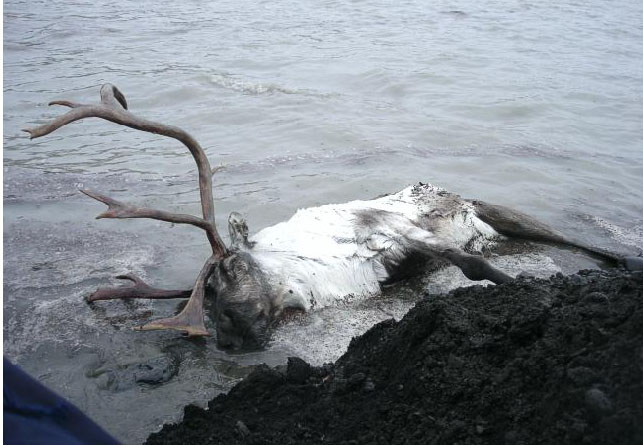
Hálslón, Kárahnjúkar, October 2006
A summer of International dissent and action against Heavy Industry – swarming around Iceland from the 6th of July 2007
Updated July 10th. The campaign to defend Europe’s vastest remaining wilderness continues. After the direct action camps in Iceland’s mountain highlands in the summers of 2005 and 2006 against the Kárahnjúkar dam and ALCOA’s Reydarfjordur aluminium smelter, the Saving Iceland campaign moves on to bring Iceland’s aluminium Heavy Industrialisation to a halt.
New plans for dams, power plants, aluminium smelters and other forms of heavy industry need to be stopped. The culprits include corporations such as ALCOA, ALCAN, Century Aluminum, Hydro, Rusal, Impregilo, Bechtel, Barclays, Mott McDonald, etc… Iceland, with it’s vast geothermal and megahydro possibilities, is a new frontier for cheap energy craving industrial moguls who see nothing worth saving in Iceland’s legendary wilderness.
This camp will bring together activists from all over the world, including activists from social movements in India, South America, Africa, Europe and North America. Stopping the industrialisation and ecological destruction of the last unspoilt country in the west would be a major victory for the green movement and a new incentive for a global movement against industrialisation and ecocide. Join us. Read More
Apr 23 2006
ALCOA, Australia, Barclays, Bechtel, Corruption, Greenwash, Impregilo, India, Kárahnjúkar, Landsvirkjun, South Africa
CorporateNews.org.uk
April 4th, 2005
Barclays Bank
Already fund the notorious Narmada dam project in India – and have played a ‘key role’ in financing the dam by arranging a $400 million loan to Landsvirkjun, the Icelandic power company that will run the dam.
Impregilo
Dodgy Italian construction conglomerate, in charge of building most of the dam . One of Impregilo’s consultants has already been found guilty in 2003 of offering bribes to a Lesotho hydro-electric firm, and the company itself will face another hearing before the Lesotho courts in April 2005. Impregilo were also involved in building the Argentina’s Yacyreta dam, which went almost $10 million over budget and was labeled byPresident Carlos Menem ‘a monument to corruption’ . Impregilo were also one of the firms planning to build the infamous Ilisu dam.
Invest In Iceland
Part of the Icelandic Ministry of Industry and Commerce. Promotes investment in Iceland, and seem to be one of the quasi-governmental agencies that has been pushing for the hydro dam.
National Power Company of Iceland (Landsvirkjun)
This is the company that will run the Karahnjukar dam. Initially set up to explore hyro-electric power opportunities, Landsvirkjun now supplies electricity to the whole of Iceland. Owned jointly by theIcelandic State (50%) and the two biggest towns Reykjav í k (45%) and Akureyri (5%). Landsvirkjun also take part in greenwash operations with Alcoa, such as ‘The Alcoa/Landsvirkjun Sustainability Group’, which co-oprdinates projects such as spreading hay to stop soil erosion – which won’t, however, stop the massive erosion caused by the dryung out of dammed river beds. More on greenwash in the Alcoa section. You can track the progress on the dam, day by day, on this part of their website: http://www.karahnjukar.is/en/
Alcoa
The US company that will run the aluminium smelter. Alcoa is the world’s largest producer of aluminium, serves the most industries as well as producing ‘bacofoil’. It is very influential in US as well as Icelandic poltics: Ethical Consumer described Alcoa’s operations as ‘a near textbook example of how to win friends in high places’, counting the US Treasury Secretary, Paul O ’ Neill, as one of its former CEOs. While a major polluter, Alcoa undertakes greenwashing exercises such as the ‘Alcoa forest’ project, which claims to plant ‘ten million trees’. However, in Western Australia Alcoa have simply planted trees on top of the blasted and mined remains of former forest land; the new growth cannot compensate for the loss old eco-system, resulting in substantial erosion of topsoil. Read More
Sep 17 2005
Actions, ALCOA, Barclays, Ecology, Economics, Greenwash, Kárahnjúkar, Landsvirkjun, Pollution
On Tuesday the 17/09/2005 the Students Union of the University of Sussex held their annual freshers fair, where new students are given freebies that no-one needs in exchange for custom. During this event, about 6 students dressed in reindeer-like costumes merrily surrounded the Barclaycard stall. Read More
Aug 29 2005
ALCOA, Barclays, Climate Change, Corruption, Ecology, Greenpeace, Greenwash, Impregilo, India, Kárahnjúkar, Landsvirkjun, Langisjór, Pollution, Repression, Saving Iceland, Skagafjörður, Skjálfandafljót, WWF, Þjórsárver
With the growing awareness of climate change, carbon emission restrictions may not be too far off. Because countries that pollute the most may well get the heaviest restrictions, rather than seeking to reduce their emissions many industrial corporations are looking to move operations abroad.
Iceland, despite modern European levels of education, welfare and wealth, has almost no heavy industry. Their carbon rations will be up for grabs. Seeing the extra pollution coming, in 2001 Iceland got a 10% increase on the CO2 limits imposed by the Kyoto treaty. The problem is that the lack of heavy industry means a lack of the major power supply needed for such things. But Iceland has glacial rivers in vast areas unpopulated by humans; land for hydroelectric dams that can be seen as carbon-neutral. Read More
Apr 19 2005
ALCOA, Barclays, Bechtel, Corruption, Democracy deficit, Ecology, Economics, Impregilo, Kárahnjúkar, Landsvirkjun, Laws, Media bias, Ólafur Páll Sigurdsson, Pollution, Repression, Rio Tinto Alcan, Þjórsá, Þjórsárver
The Icelandic government and media tried to hush this story up by not reporting it for months! When environmental activist Olafur Pall Sigurdsson was being interviewed on a chat programme on the State Radio about hypothetical questions of civil disobedience he seized the opportunity and read aloud the whole of Doughty’s EDM. The programme presenter was seriously reprimanded by her bosses for allowing this.
British MP Sue Doughty has tabled a Parliamentary motion calling on the British Government to use its diplomatic links with Iceland to persuade the Icelandic Government to terminate the building of a series of dams in the Icelandic Highlands.
Read More
Mar 21 2004
1 Comment
Actions, ALCOA, Barclays, Bechtel, Cultural, Democracy deficit, Impregilo, Kárahnjúkar, Landsvirkjun, Ólafur Páll Sigurdsson, Pollution, R & D Carbon, Repression, Saving Iceland
This historic action marks the beginning of Saving Iceland.
DON’T LET THE SUN GO DOWN ON ICELAND!
This was the message demonstrators at Tate Modern wanted to get across as Icelandic artist Olafur Eliasson’s hugely successful ‘Weather Project’ exhibition – featuring a giant sun – came to an end.
The 25 demonstrators staged an “umbrella protest” against the ALCOA dam currently under construction in the Icelandic highlands which will see vast swathes of Europe’s last remaining wilderness flooded in 2006.
Interviewed in the Guardian newspaper on the 27/12/03 Olafur Eliasson himself stated that his “greatest fear is that US aluminium giant ALCOA is destroying the Icelandic highlands with the support of our government.”
The Icelandic government recently announced further plans for similar projects which, protesters say, will spoil much of Iceland’s world-famous pristine nature.
“The government want to turn Iceland into a heavy industry hell,” said one protester, Icelandic environmentalist Olafur Pall Sigurdsson. “These mega projects benefit nobody except the multinational companies who instigate and build them. ”
“This programme of building big dams in Iceland will drag us back into the 20th century when the rest of 21st century Europe and the US is busy dismantling environmentally unfriendly dams,” Sigurdsson went on. Read More
Jan 01 2004
1 Comment
ALCOA, Barclays, Ecology, Economics, Kárahnjúkar, Landsvirkjun, Laws, Pollution, Surinam
Briefing from International Rivers Network and Friends of the Earth
January 2004
The article in pdf format
EXPOSING THE EQUATOR PRINCIPLES
Barclays bank are helping to arrange a $400 million loan to an Icelandic power company (‘Landsvirkjun’) to construct the countries biggest hydropower project (‘Karahnjukar’) in the Iceland Central Highlands, the second largest remaining wilderness area in Europe, in apparent breach of the banks own green project finance principles the Equator Principles and for the primary purpose of providing cheap electricity for a new aluminium smelter (‘Fjardaal’) for the aluminium producer Alcoa. Read More
Nov 29 2003
8 Comments
ALCOA, Barclays, Bechtel, Corruption, Dams, Democracy deficit, Ecology, Economics, Greenwash, Guðmundur Páll Ólafsson, Impregilo, Kárahnjúkar, Landsvirkjun, Laws, Ólafur Páll Sigurdsson, Pollution, Repression, WWF
The Guardian, November 29, 2003
‘Power Driven’ appeared in The Guardian Weekend in 2003 and made a major impact in Iceland. It is still the best main stream analysis of many key issues at stake and an excellent overview of the social background.
In Iceland, work has already begun on a colossal $1bn dam which, when it opens in 2007, will cover a highland wilderness – and all to drive one US smelter. Environmentalists are furious, but the government appears determined to push through the project, whatever the cost. Susan DeMuth investigates.
North of Vatnajokull, Europe’s biggest glacier, lies Iceland’s most fascinating and varied volcanic landscape. Ice and boiling geothermal infernos meet at the edges of the glacier, and then the largest remaining pristine wilderness in western Europe begins – a vast panorama of wild rivers, waterfalls, brooding mountains and mossy highlands thick with flowers. Read More
Jul 18 2003
2 Comments
ALCOA, Barclays, Cultural, Ecology, Economics, Greenwash, Kárahnjúkar, Landsvirkjun, Laws, Pollution
International Rivers Network
The $400 million loan for Iceland’s National Power Company
On July 9, 2003, a $400 million revolving credit was signed by Iceland’s National Power Company (Landsvirkjun) and a consortium of 19 banks. The mandated arrangers of the loan are Barclays Bank (UK), Sumitomo Mitsui Banking Corporation (Japan), SEB (Sweden), and Societe Generale (France), with shares of $31 million each. The other members of the consortium are CDC IXIS (France), Danske Bank (Danmark), DePfa Group (Germany/Ireland), Dexia Group (France/Belgium), Fortis Bank (Netherlands), Islandsbanki (Iceland) and Landesbank Baden–Wuertemberg (Germany), with $25 million each; Deutsche Postbank (Germany), KBC Bank (Belgium) and Norddeutsche Landesbank Girozentrale (Germany), with $17 million each; and BNP Paribas (France), Deutsche Bank (Germany), JP Morgan (USA), Kaupthing Bunadarbanki (Iceland) and Landsbanki Islands (Iceland) with $10 million each. Read More
